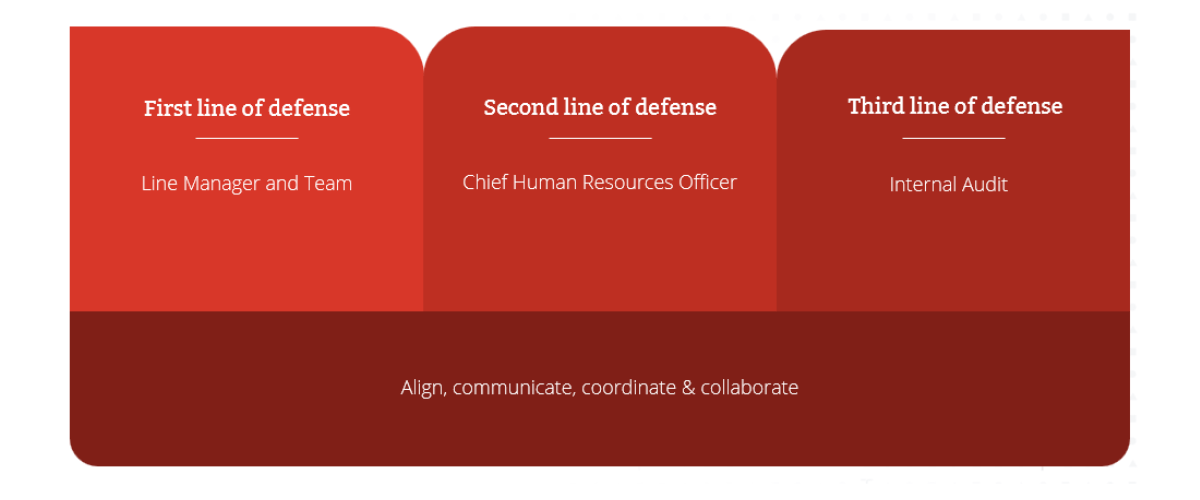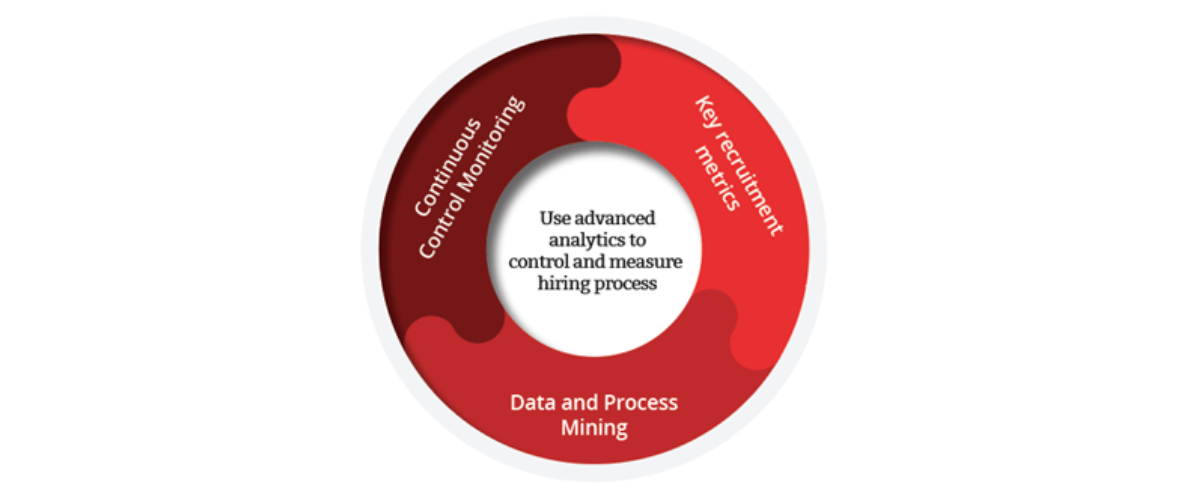- Internal audit enhances compliance, efficiency and candidate quality
- Risk mitigation is a highly effective and impactful improvement strategy
- Focus on your first line of defense if you don't have an internal audit function
- Our Talent Acquisition Scan can help identify risks and opportunities within your recruitment process
As the world becomes more fast-paced, risks continue to evolve, and the need for resilience grows. Not only the functions of internal audit, internal control, and risk management must be more proactive than ever. According to the 2024 global survey by the Institute of Internal Auditors (IIA), 'human capital' ranks as the second highest risk facing companies. Consequently, HR professionals must also develop a comprehensive understanding of the risks associated with HR processes.
The webinar ‘How Internal Audit can optimize the hiring process and drive recruitment success’ addresses the risks associated with the hiring process. Our industry experts Annemie Pelgrims (Expert Practice Leader TriFinance Risk Advisory) and Céline Woltman (Business Manager TriHD) shared their valuable insights on trends, best practices and the execution of high-impact recruitment internal audits. Vicky Posthumus, Expert at TriFinance, hosted the session.
The relevance of recruitment internal audit
The 2024 annual Risk survey conducted by the Institute of Internal Auditors (IIA) once again highlighted human capital as the second biggest risk, encompassing recruitment, diversity, talent management and retention. The survey indicates that Heads of Internal Audit expect a substantial rise in the time spent on this risk in the coming years.
We believe that conducting a recruitment audit will enhance compliance, efficiency and cost-effectiveness, while improving the candidate’s quality and experience. It provides data-driven insights to mitigate risks related to finding, attracting ánd retaining talent, leading to better hires and reduced turnover.
While risk mitigation may not seem like a typical HR responsibility, implementing internal controls in the hiring process is a highly effective and impactful improvement strategy.
In today's tight labour market, mitigating risks that might form obstacles to finding, attracting and keeping talent is crucial.
Céline Woltman
Risks within the hiring process
There are four types of risks associated with the hiring process. While many are familiar, they are often not yet managed as risks.
- Strategic risks, e.g. no market-based wages and compensation leading to suboptimal budget allocation;
- Operational risks, e.g. difficulties in attracting and retaining talent due to limited forecasting of the required labor force;
- Financial risks, e.g. increased recruitment costs due to suboptimal allocation of resources;
- Compliance risks, e.g. limited adherence to the EU Pay Transparency directive can lead to fines and reputational damage.
Three lines of defense
The role of internal audit in assessing the design and effectiveness of the internal controls embedded in the recruitment process can be illustrated using the 3 lines of defense model. The first line manages the recruitment risks by implementing internal controls, the second line monitors and guides the first, and the third line independently assesses the effectiveness of the first two lines and provides recommendations for improvement.

For example: Your Talent Acquisition team attracts the necessary talent for current and future needs, working with line managers as the first line of defense. The second line develops and implements an HR strategy, including recruitment and succession planning. This Strategic Workforce planning starts at CHRO level and is implemented by line management. Your Internal Audit responsible will ensure the existence and adherence to this strategic plan.
If you do not have an internal audit function in-house or outsourced, we advise focusing on your first line of defense to ensure internal controls are effectively executed through the recruitment process.
Focus on your first line of defense if you don't have an internal audit function in-house or outsourced.
Annemie Pelgrims
Some best practices
We often see the following key internal controls are missing:
- Governance controls
- Segregation of duties
- Authority Matrix
- Documented key policies and procedures
- Compliance controls
- Embedded job levels
- Embedded job levels
- Operational controls
- Periodic monitoring and review of recruitment KPIs
- Documented candidate screening and selection criteria process
- IT controls
- Confidentiality
- Data protection
We consider the implementation of advanced analytics as a best practice, which can consist of continuous control monitoring to identify trends, key recruitment metrics (e.g. time-to-fill, cost per hire, etc.) as well as data and process mining to analyze and optimize the hiring process.

Identify potential risks and opportunities
Talent acquisition is a broad field of expertise that should be viewed as an end-to-end process. Its complexity and the wide range of stakeholders involved make it challenging to identify areas for improvement and potential risks. This is where the Talent Acquisition Scan can help. The scan provides a pragmatic roadmap for process improvement and highlights risk areas.
The Talent Acquisition Scan starts by mapping the current situation through a survey and in-depth interviews with all relevant stakeholders. This enables a fit-gap analysis of the future state. We can assist you in implementing the redesigned process, offering training and support to all stakeholders involved.
Key takeaways
In conclusion, as the pace of business accelerates and risks evolve, the role of internal audit in the hiring process is more critical than ever. The 2024 IIA survey underscores 'human capital' as a top risk, necessitating a comprehensive understanding of HR-related risks by HR professionals.
By conducting recruitment audits and implementing best practices, organizations can enhance compliance, efficiency, and candidate quality while mitigating risks associated with attracting and retaining talent. Utilizing advanced analytics further strengthens the recruitment process.
The key message is clear: Internal audit functions, combined with HR professionals as guest auditors, are essential in optimizing hiring practices and driving recruitment success, ultimately leading to a more resilient and effective organization.
Would you like to know more about our approach on Risk?
Discover moreRelated content
-
Blog
Webinar takeaways: How to deal with common challenges in your data projects
-
Article
Why CFOs can’t afford to ignore Data Engineering in 2025
-
Article
Power BI training: from data literacy and data modeling to strategic reporting in finance
-
Blog
The Omnibus vote: Europe votes to weaken sustainability reporting rules
-
Article
E-Invoicing: Only one in three medium and large companies in Belgium is ready
-
Blog
The Omnibus reversal: a decidedly unsustainable step backward in ESG policy
-
Career in Internal Team
Client Partner | Public Sector
-
Career as Consultant
Senior Finance consultant | Public sector
-
Career as Consultant
Junior Finance Consultant | Public Sector
-
Career as Consultant
Medior Finance Consultant | Public Sector
-
Career in Internal Team
Data Engineer
-
Career in Internal Team
Business Development Manager